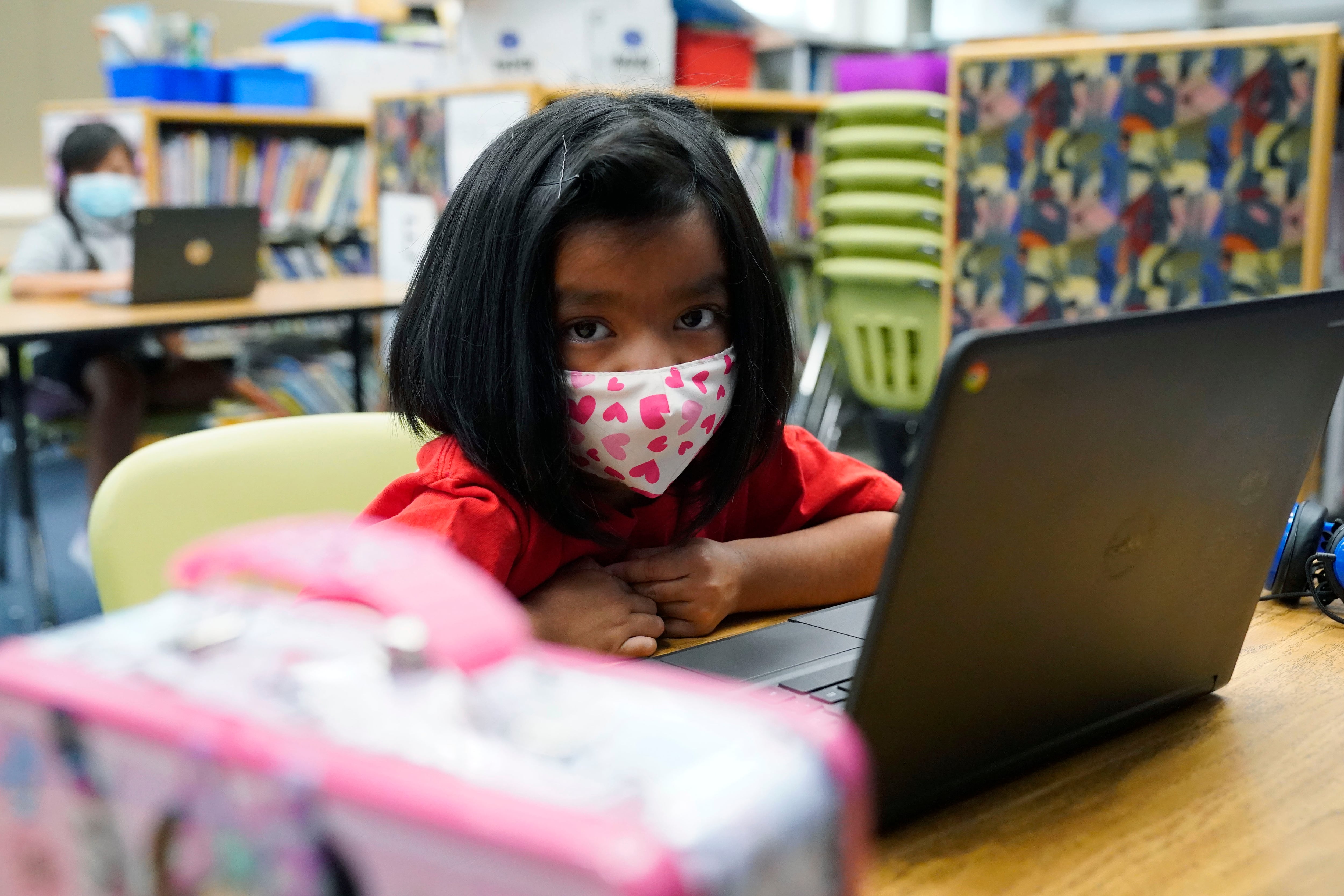Most of Colorado’s 30 largest school districts are still planning to offer some in-person learning for the rest of the calendar year, a Chalkbeat analysis found. But the situation is changing rapidly, as COVID-19 cases continue to soar and more districts pivot to online learning.
By the time you read this story, it could be out of date.
“We were in person until 5 minutes ago,” Pueblo District 70 spokesman Todd Seip said Wednesday. “We are transitioning to remote learning for all grades and schools starting tomorrow through Christmas break due to the exponential growth of COVID cases.”
State statistics show COVID-19 growing dramatically in Colorado through the fall. As of Thursday, Colorado was reporting about 3,400 new coronavirus cases per day in a state of 5.7 million people, up from about 800 new cases per day a month ago. The test positivity rate was at 11.5%, up from 3.9% a month ago. Test positivity above 5% is considered a sign both of inadequate testing and high rates of community transmission.
The situation was worse in some counties. On the state’s COVID dial, 25 of Colorado’s 64 counties were in the second-highest level of state safety restrictions. They included the entire Denver metro area, El Paso County, and several mountain counties.
Among the 30 largest school districts, which serve more than 80% of Colorado students, Pueblo District 70 is one of eight that will be engaged in entirely remote learning by next week. The others are Cherry Creek, Adams 12, Boulder, School District 49, Littleton, Greeley-Evans, and Adams 14.
Together, the eight districts serve more than a quarter of the students — approximately 204,000 children — in the state’s 30 largest districts.
The remaining 22 districts are still offering in-person learning. But how much varies wildly.
In some districts, such as District 51 in Grand Junction, all students have the option of learning inside classrooms five days a week. Meanwhile, Denver Public Schools is only offering in-person learning to students in preschool through second grade, as well as some students with disabilities and students new to the United States.
Five of the 22 districts still offering in-person learning — Jeffco Public Schools, Douglas County, Aurora, Colorado Springs District 11, and Harrison District 2 — have already announced plans to go remote after Thanksgiving. This mirrors a trend seen across the country.
In Colorado, the reason for going remote is often operational. With each new COVID case triggering at-home quarantines of classmates and colleagues, districts don’t have enough educators to keep schools running.
“Our school district has reached a tipping point,” District 11 Superintendent Michael Thomas wrote in a message to families Wednesday. “We simply don’t have enough staff or substitutes to keep our schools open for in-person learning much longer.”
In other cases, elected school boards have responded to community and teacher concerns. In Adams 14, which has been hard-hit by COVID, school board members cited rising rates and their own personal experience with the disease. In Aurora, the school board pushed back against Superintendent Rico Munn’s desire to keep the youngest students in school.
Colorado does not have a statewide strategy for opening or closing school buildings during the pandemic. In keeping with the state’s long tradition of local control, each of Colorado’s 178 school districts — many of which are tiny and rural — are tasked with making their own decisions based on guidance from state education and local public health officials.
That has resulted in a patchwork of scenarios and an unequal experience for the state’s 913,000 students. It has also resulted in frequent changes as districts respond separately, and often abruptly, to rising or falling COVID-19 infections in their communities.
Take Denver Public Schools, for example. The state’s largest school district announced over the summer that it planned to bring students back to school in person this fall. Then the district reversed course, citing rising coronavirus cases as a reason to start remotely instead.
Denver gradually reopened elementary schools in September and October. But for students in grades three through five, their time in person was short. They’re now back online, along with middle and high school students, most of whom never returned to classrooms at all.
“While all elementary school children benefit from in-person instruction and support, we are concerned that the overall community trend requires us to shift more of our staff and students to remote learning,” Superintendent Susana Cordova wrote.
“I am heartbroken that we are here.”
That sort of back-and-forth is what most districts hope to avoid. But for those offering in-person learning, it has become inevitable — at least at a classroom level. Whenever a student or teacher gets sick, their contacts need to stay home for 14 days, necessitating a switch to remote learning. If enough staff are quarantined, the school building closes.
Leaders in the districts where schools remain open, including 27J Schools in Brighton, hope that a school-by-school strategy allows them to avoid districtwide remote learning.
Superintendent Chris Fiedler told the 27J school board on Tuesday that even though 610 students — about 4% of the student population — were quarantined at the time, he believes schools can still operate safely. Of the more than 150 cases of COVID detected among students and staff since the beginning of the school year, Fiedler said it was his understanding that contact tracers had found just one instance of virus transmission inside a school.
“I remain committed to approaching closures and ‘rolling remote’ on a cohort-by-cohort — or if necessary, a school-by-school — basis because I prefer that,” he said.
However, Fiedler acknowledged that may not be possible forever.
“Eventually we’re going to run out of rabbits to pull out of our hat,” he said.







